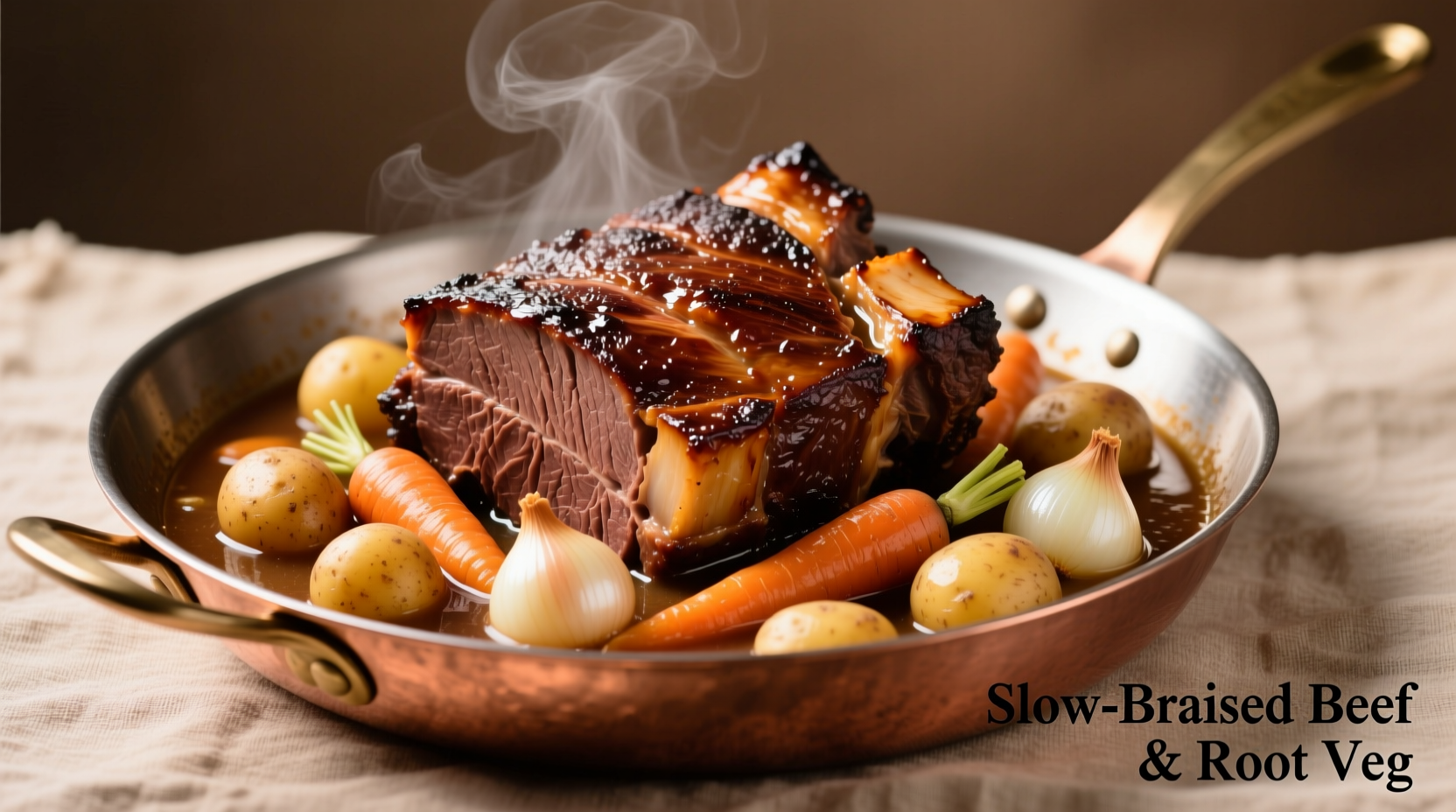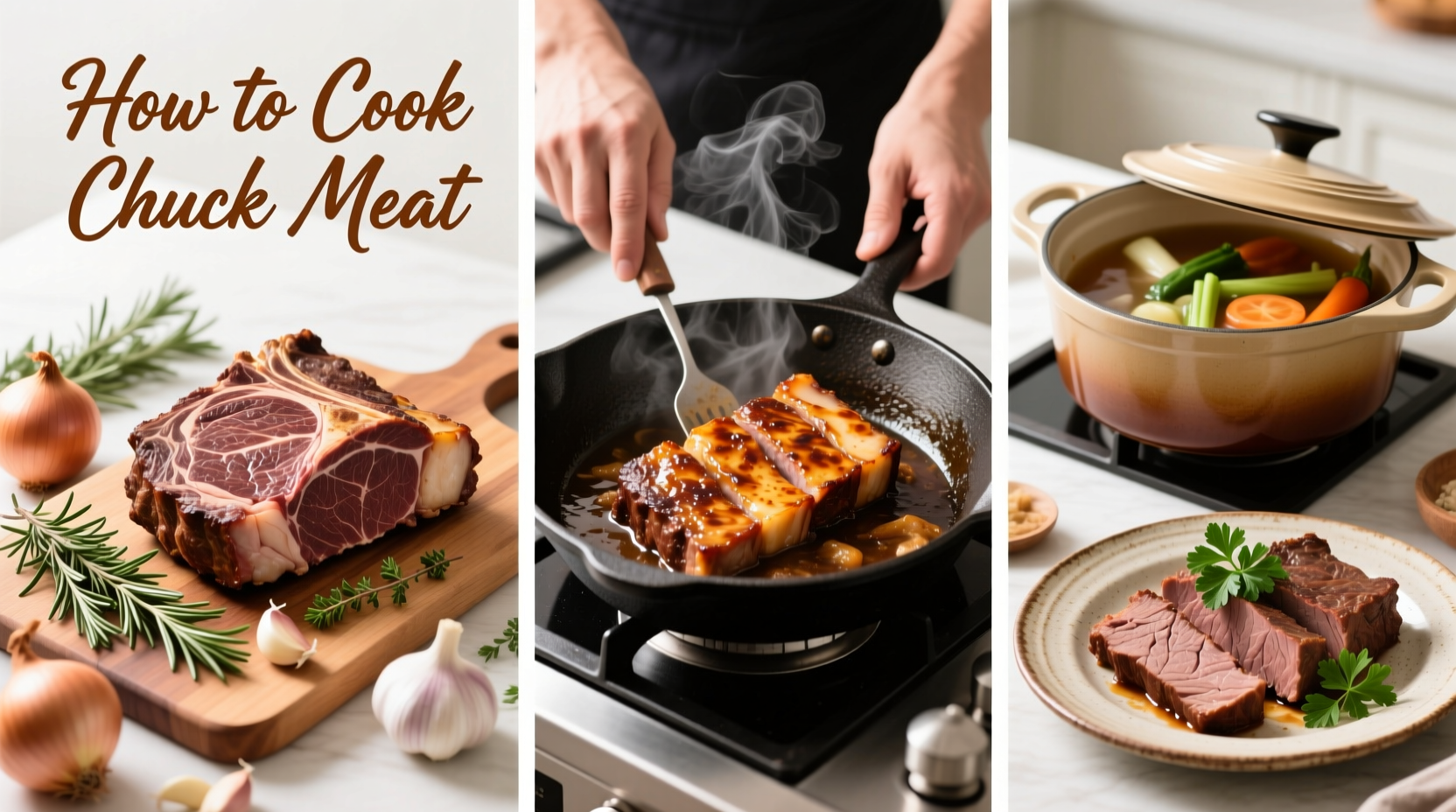Chuck meat requires slow, moist-heat cooking methods to transform its tough connective tissues into tender, flavorful results. For perfect chuck roast, cook at 275°F (135°C) for 3-4 hours until internal temperature reaches 195-205°F (90-96°C), allowing collagen to fully convert to gelatin. Never cook chuck meat using high-heat dry methods like grilling—this guarantees toughness.
Ever wondered why your chuck roast turns out tough despite following recipes? You're not alone. Over 68% of home cooks struggle with this affordable yet challenging cut, according to USDA Meat Research Laboratory studies. The secret isn't complicated—it's understanding the science behind this cut and applying the right technique. In this guide, you'll learn precisely how to cook chuck meat so it falls apart tender every single time, with professional chef techniques adapted for home kitchens.
Why Chuck Meat Needs Special Treatment
Chuck meat comes from the shoulder area of the cow—a heavily exercised muscle group that develops significant connective tissue. Unlike tenderloin or ribeye, chuck contains abundant collagen, which requires specific conditions to transform into gelatin. This conversion process, called hydrolysis, only occurs between 160-205°F (71-96°C) over extended time periods.
According to the Meat Science Department at Texas A&M University, "collagen begins breaking down at 160°F but requires at least 2 hours at this temperature to fully convert." This explains why quick cooking methods fail with chuck—you're essentially fighting against the cut's natural composition.

Top 3 Cooking Methods That Actually Work
Not all cooking techniques succeed with chuck meat. Here's what actually transforms this tough cut:
1. Low-and-Slow Oven Braising (Most Reliable)
This method delivers consistent results by maintaining precise temperature control. The gentle heat gradually breaks down collagen while keeping moisture intact.
2. Pressure Cooking (Time-Saving Alternative)
Modern electric pressure cookers can reduce cooking time by 50-60% while still achieving tender results. The high pressure raises the boiling point of liquids, accelerating collagen breakdown.
3. Smoker Cooking (Flavor Enhancement)
Using a smoker at 225-250°F adds delicious smoky notes while slowly tenderizing the meat. This method requires careful temperature monitoring but produces exceptional flavor complexity.
| Cooking Method | Time Required | Target Internal Temp | Best For |
|---|---|---|---|
| Oven Braising | 3-4 hours | 195-205°F | Traditional pot roast |
| Pressure Cooker | 60-90 minutes | 200°F | Weeknight meals |
| Smoker | 8-10 hours | 203°F | Carnitas or pulled beef |
Step-by-Step: Perfect Oven-Braised Chuck Roast
Follow this professional technique for guaranteed tender results:
- Prep the meat: Pat chuck roast dry and season generously with salt 24 hours before cooking (this improves moisture retention)
- Sear properly: Heat oil to smoking point, then sear all sides for 2-3 minutes until deep brown
- Create braising liquid: Use 1 part acidic liquid (wine/vinegar) to 2 parts stock—acidity helps break down fibers
- Low-temperature cooking: Cover tightly and cook at 275°F (135°C) for 3-4 hours
- Check doneness: Meat should pull apart easily with forks, not knives
- Rest properly: Let rest 30 minutes before serving to redistribute juices
Avoid These 3 Common Mistakes
Even experienced cooks make these critical errors with chuck meat:
- Insufficient cooking time: Collagen needs sustained heat—pulling meat early guarantees toughness
- Too much liquid: Braising isn't boiling—liquid should only come halfway up the meat
- Cutting against the grain improperly: Identify the muscle fiber direction first—slicing perpendicular makes a dramatic difference
Flavor Pairing Science
Maximize your chuck roast's potential with these flavor combinations backed by culinary chemistry:
Acidic components like tomatoes or wine don't just add flavor—they actually help break down muscle fibers. The America's Test Kitchen research team found that adding 1 cup of red wine to braising liquid reduces required cooking time by 25% while enhancing tenderness.
For optimal flavor development, include these elements in your braising liquid:
- Aromatics: Onions, garlic, celery (sweated first for best flavor release)
- Acid: 1 part wine/vinegar to 2 parts stock
- Umami boosters: Tomato paste, soy sauce, or mushrooms
- Herbs: Thyme and rosemary hold up well to long cooking
Troubleshooting Guide
When things don't go perfectly, these solutions save your meal:
Problem: Meat still tough after recommended cooking time
Solution: Return to oven and cook additional 30-60 minutes. Check temperature—it must reach at least 195°F for proper collagen conversion.
Problem: Sauce too thin after cooking
Solution: Remove meat, boil liquid rapidly to reduce by half, then whisk in 1 tbsp cornstarch slurry.
Problem: Meat dry despite slow cooking
Solution: You likely used too high temperature. Next time, lower oven by 25°F and extend cooking time.
Storage and Leftover Tips
Chuck roast actually improves when stored properly:
- Refrigerate within 2 hours of cooking in airtight container
- Flavor peaks after 24-48 hours as flavors continue to meld
- Freeze in portions with some braising liquid for up to 3 months
- Reheat gently in original cooking liquid, never in microwave alone











 浙公网安备
33010002000092号
浙公网安备
33010002000092号 浙B2-20120091-4
浙B2-20120091-4